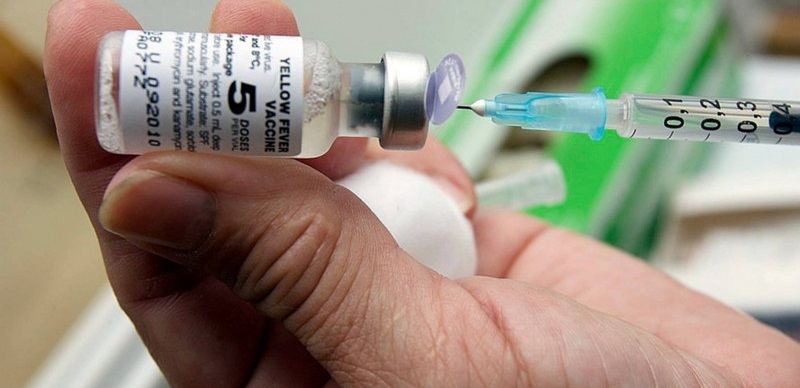

The World Health Organization has said that 160 million Nigerians are at risk of yellow fever.
The WHO said with Nigeria’s population of about 200 million, the figure makes up around 25 percent of all the people at risk in Africa.
Yellow fever is an acute viral hemorrhagic disease transmitted by infected mosquitoes.
The “yellow” in the name refers to jaundice that affects some patients.
Symptoms of yellow fever include fever, headache, jaundice, muscle pain, nausea, vomiting, and fatigue.
According to the Medical Officer, WHO Nigeria, Dr. Anne Eudes Jean Baptiste, said, “yellow fever is dangerous because a small percentage of patients will go through a more toxic phase of the disease. By then, they will experience fever, and have system failure, mainly in the kidney and liver. They may experience bleeding coming from the mouth, nose, and eyes and within 7 to 10 days, half of them will die.”
The WHO also said Nigeria is at risk of both Urban and Sylvatic (jungle) exposure to the disease.
Sylvatic exposure is the transmission of yellow fever from mosquitoes that have bitten animals and non-human primates, workers in mining and agriculture are particularly vulnerable to this type of transmission.
In 2017, there was a resurgence in yellow fever in Nigeria after 15 years. This is due to gaps in the detection of the disease rather than lack of transmission of the virus and the cyclical nature of Sylvatic transmission. As surveillance and laboratory testing have been strengthened, improved information about the distribution of the disease in humans has become available.
The global health body, however, said Nigeria has vaccinated over 45 million people against yellow fever during the covid-19 pandemic, and reports revealed that Nigeria has recorded no fewer than 1,005 suspected yellow fever cases so far in 2022.
The cases were reported from 36 states including the FCT in 390 local government areas.
According to the Director General of the Nigeria Centre for Disease Control, Dr. Ifedayo Adetifa, there is strengthened surveillance for the disease.
“Despite the ongoing covid-19 pandemic, we have given out over 66 million doses in 2020 and 2021 to protect people from yellow fever outbreaks”.
This achievement has been possible through routine immunization, as well as mass vaccination campaigns that identify gaps in the population and proactively target vulnerable communities,” he said.
Culled/Adebukola Aluko
Subscribe to our Telegram channel